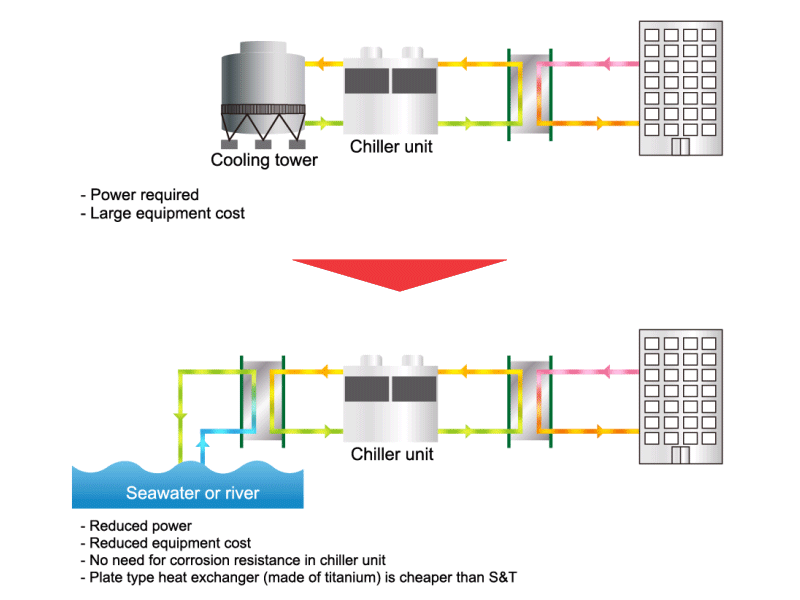
- Find the heat recovery loop that is shaped like the symbol for infinity (∞).
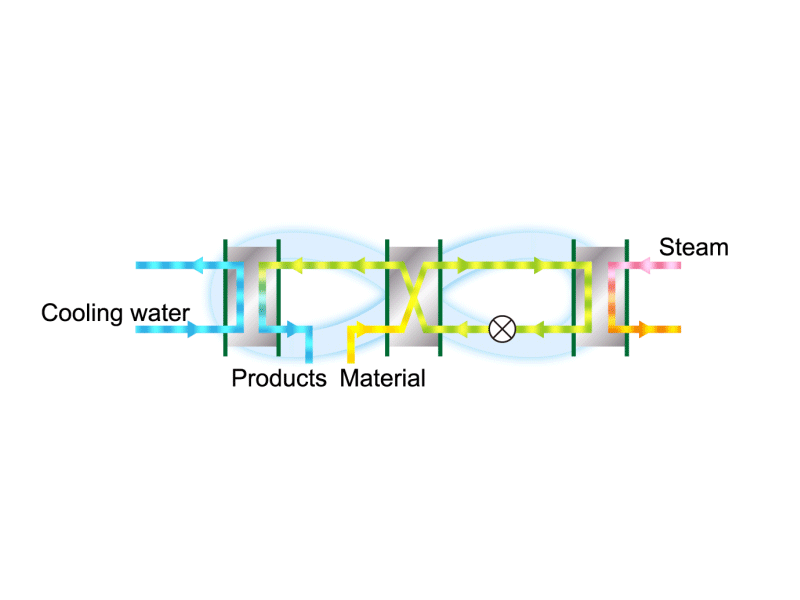

- Use a heat source with a similar temperature to improve efficiency! Find the best heating/cooling source

- Use the heat (latent heat) of steam

- Review temperature conditions and change operating conditions

- Think outside the box to aim for the best solution
Electricity and Energy
Condensate Recovery


Process overview
In the power plant, the boiler feed water (deaerator suction) is needed to heat up. Usually, there is an energy saving system inside which is exchanging the heat condensate (steam drain). Due to the high design pressure, shell & tube type heat exchanger is preferable.
- Improvement effect
- Hisaka plate heat exchangers can be used under unprecedented high-temperature and high-pressure operating conditions. Using a plate heat exchanger improves heat transfer performance and achieves a high heat recovery rate. In addition, it is lightweight and compact, and has high maintainability so that dirt can be removed regularly to maintain heat transfer performance.
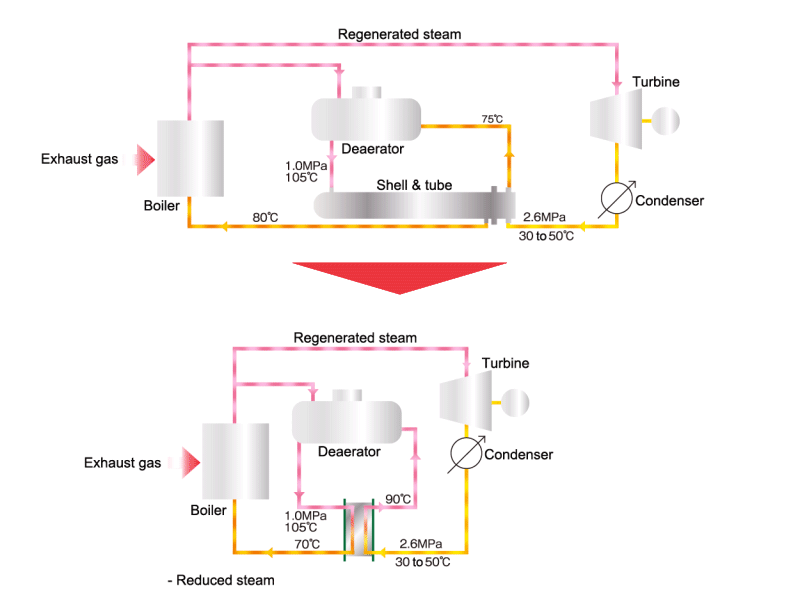
Natural Gas Evaporation System

Process overview
While LNG is gasified to use as a fuel, LNG is heated up by burning itself. Focusing on the latent heat of LNG, this heat can be generate chilled water. Of course no burner is required, This idea is applicable not only for LNG, but also for LN2,LHe,etc.
- Improvement effect
- Utilizing its latent heat to generate 7°C of chilled water, by circulating ethylene glycol. Excessive latent heat shall be removed by sea water or other cooling media.
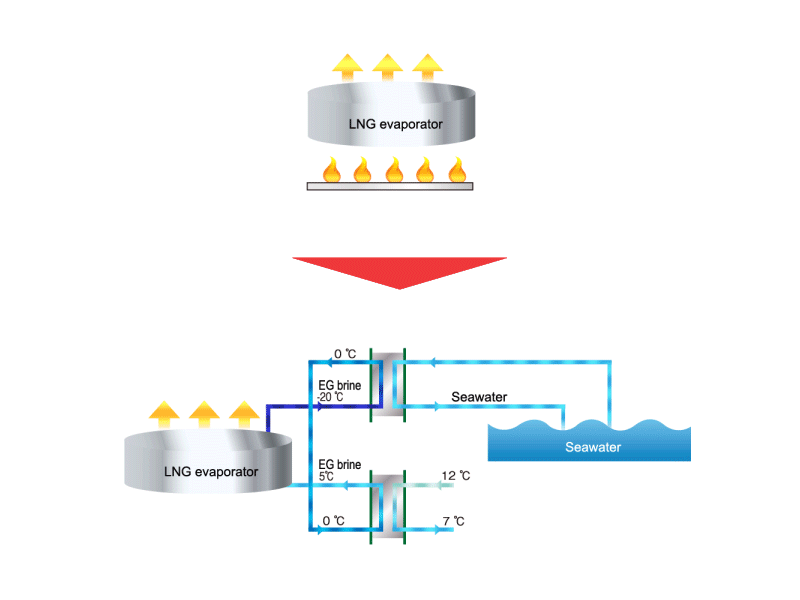
Refrigeration System (a)

Process overview
Generally, the refrigeration system has two heat exchangers, one is the evaporator and one is the condenser. To increase the performance of the system, the one of the effective way is lowering the temperature of the condenser and/or increasing the temperature of the evaporator. It can reduce the work load for the refrigerant compressor so that efficiency can be improved.
- Improvement effect
- BHE (Brazed plate heat exchanger) is one of the best selections for the refrigeration system. It can optimize and improve the total system entirely.
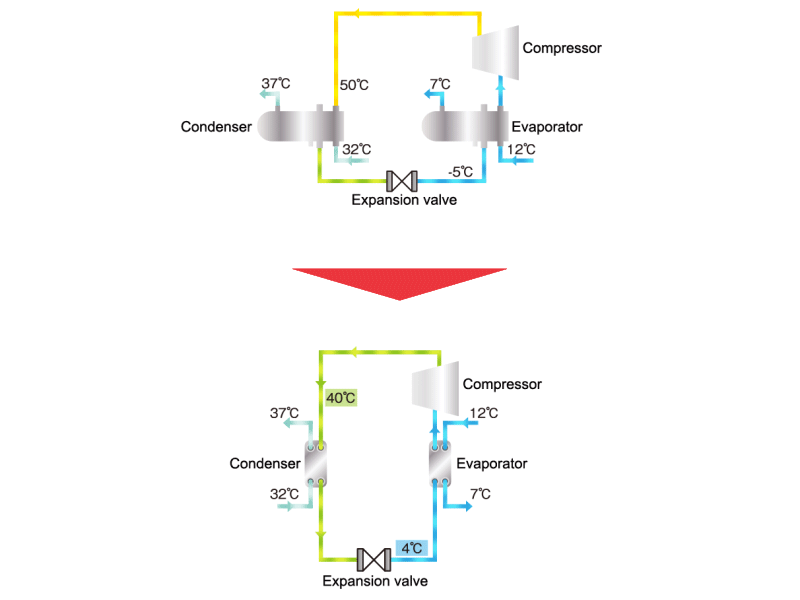
Refrigeration System (b)

Process overview
This process shows the normal usage of the chiller unit and plate heat exchanger.
- Improvement effect
- Default setting of the standard chiller is 7°C in the market. However, is it necessary to be? When increase the temperature to 8°C even 1°C, it can approximately cut 3% of the electricity consumption. Optimize the chilled water setting to save energy by the plate heat exchanger.
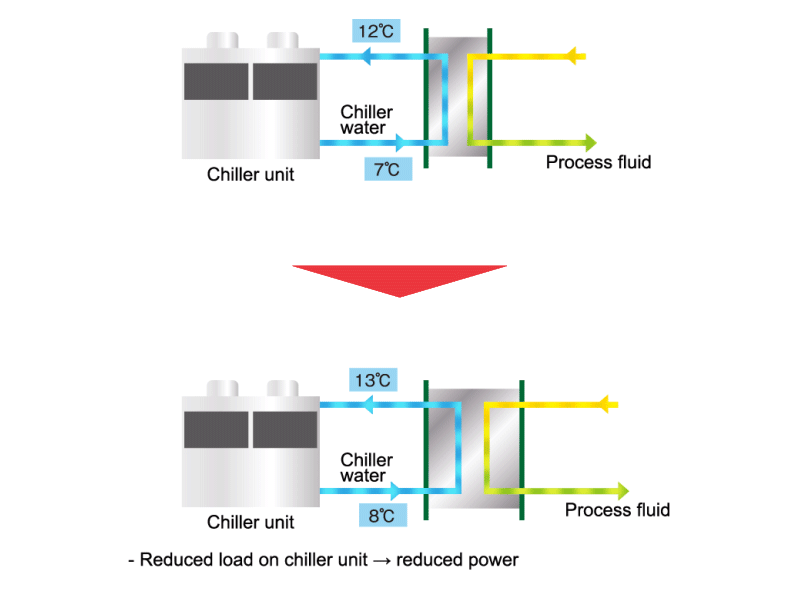
Hidden Potential Energy

Process overview
In the case of a chiller unit, circulating water from the cooling tower is used as the cooling water for the condenser.
- Improvement effect
- You can save on the equipment costs and running costs of the cooling tower by using water from the sea or rivers as cooling water
